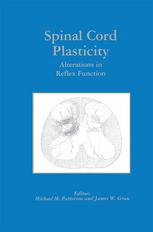

Most ebook files are in PDF format, so you can easily read them using various software such as Foxit Reader or directly on the Google Chrome browser.
Some ebook files are released by publishers in other formats such as .awz, .mobi, .epub, .fb2, etc. You may need to install specific software to read these formats on mobile/PC, such as Calibre.
Please read the tutorial at this link: https://ebookbell.com/faq
We offer FREE conversion to the popular formats you request; however, this may take some time. Therefore, right after payment, please email us, and we will try to provide the service as quickly as possible.
For some exceptional file formats or broken links (if any), please refrain from opening any disputes. Instead, email us first, and we will try to assist within a maximum of 6 hours.
EbookBell Team

4.8
24 reviewsThe area of spinal cord plasticity has become a very actively researched field. The spinal cord has long been known to organize reflex patterns and serve as the major transmission pathway for sensory and motor nerve impulses. However, the role of the spinal cord in information processing and in experience driven alterations is generally not recognized. With recent advances in neural recording techniques, behavioral technologies and neural tracing and imaging methods has come the ability to better assess the role of the spinal cord in behavioral control and alteration. The discoveries in recent years have been revolutionary. Alterations due to nociceptive inputs, simple learning paradigms and repetitive inputs have now been documented and their mechanisms are being elucidated. These findings have important clinical implications. The development of pathological pain after a spinal cord injury likely depends on the sensitization of neurons within the spinal cord. The capacity of the spinal cord to change as a function of experience, and adapt to new environmental relations, also affects the recovery locomotive function after a spinal cord injury. Mechanisms within the spinal cord can support stepping and the capacity for this behavior depends on behavioral training. By taking advantage of the plasticity inherent within the spinal cord, rehabilitative procedures may foster the recovery of function.